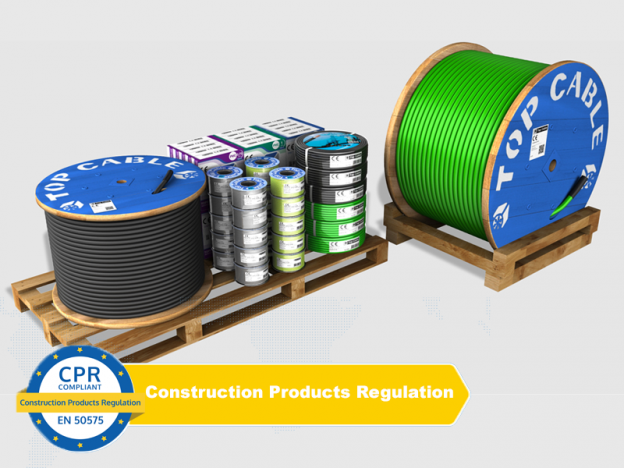The CPR certificate primarily assesses two aspects in the event of a fire: the reaction…
10 questions about CPR
The CPR is a European standard that regulates the reaction of building materials to fire. Electrical cables, as part of the installation in any construction, refer to this regulation. Depending on its design, each cable has a specific CPR classification, and depending on this classification, it offers greater or lesser safety in the event of fire. Below we would like to clarify the main doubts you may have regarding this regulation.
1. What is CPR?
The CPR is a standard issued by the European Community to regulate the limits of fire and hazardous substances in construction materials.
The CPR establishes harmonised standards for the marketing of construction products in the European Union. The regulation establishes a common technical language policy for assessing the performance of construction products. This ensures that reliable information is available to professionals, public authorities and consumers so that they can compare the performance of products from different manufacturers.

2. What is the history of the CPR regulation?
2000 Construction Products Directive (CPD)
2006 Definition of classes and CEMAC2
2011 Construction Products Regulation (CPR)
2014 EN 50575
2015 (July) Publication DOUE
2016 (July) Date of execution of the CPR
2017 (July) Full implementation of CPR
3. What are the applicable rules for CPR?
• Power, control and communication cables. Cables for general applications on construction sites subject to reaction to fire requirements (EN 50575).
• Fire classification of construction products and building elements. Measurement of smoke and heat production during flame propagation in a test (EN 13501-6).
• Common test methods for cables under fire conditions. Measurement of heat and smoke release during flame propagation in a cable (EN 50399).
• Tests on electrical cables and fibre optic cables under fire conditions. Single insulated cable vertical flame spread test (EN 60332-1-2).
• Measurement of smoke density of cables burning under defined conditions (EN 61034-2).
• Test on gases during combustion of materials from cables. Determination of acidity and conductivity (EN 60754-2).
4. On which products does CPR apply?
Applies to construction products. Products which are intended to be permanently incorporated into constructions, not only buildings, but also civil engineering works.
It monitors power, telecommunications, data and control cables and excludes cables for connecting devices.
5. What is the objective of CPR?
The CPR has been developed to ensure the reliability of information on construction products in relation to their performance. This is achieved by providing a ‘common technical language’, offering a uniform assessment of methods for the performance of construction products.
This common technical language is applied by:
a) The manufacturers themselves in declaring the performance of their products.
b) The specification of requirements of authorities and member states.
c) Users (architects, engineers, builders, etc.) when choosing the products that are most suitable for use on construction sites.
6. Which benefits that apply to cables are included under the CPR?
The only performances that apply to cables and are included in the CPRs are:
1) What is its reaction to fire.
2) How much fire resistance does it have.
3) Release of hazardous substances.
7 . How will CPR be implemented in Europe? What aspects will be common to all countries and what aspects will be specific to each country?
The CPR must be applied without differences in interpretation by each Member State. Euroclassification is the common language for defining the fire tolerance level of cables (reaction to fire and, in the future, fire resistance) and for use in local regulations.
Any decision as to which class to adopt for a particular application is a national matter, and may vary between Member States. The wide range of combinations of the parameters (class, smoke, acidity) gives Member States a great deal of flexibility. Not all Member States regulate fire performance.
8. How are the cables going to be replaced?
Some cable ranges will require potential re-evaluation and adjustment because current performance levels do not match Euroclasses B2ca, Cca y Dca.
9. An example of cable marking

Cable marking: reaction to fire class
Example:
“TOP CABLE TOXFREE ZH RZ1-K (AS) 0,6/1 kV 1X240 UNE 21123 IEC 60502 AENOR CE Cca-s1,d1,a1 90ºC”
10. Will it be mandatory for European cables to be harmonised?
Only fire performance will be harmonised. The national cable types will remain unchanged, except for the declared fire performance. This will simplify the work of specifiers and users, who will continue to use the usual types.
Want to know more about CPR? We summarise it for you in 4 minutes in this video.




